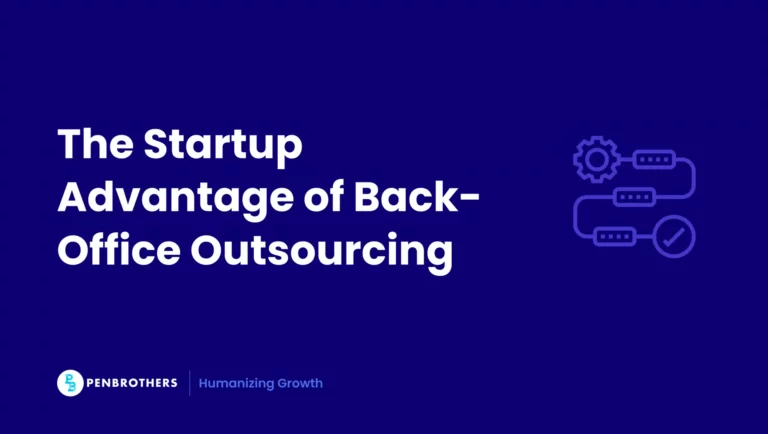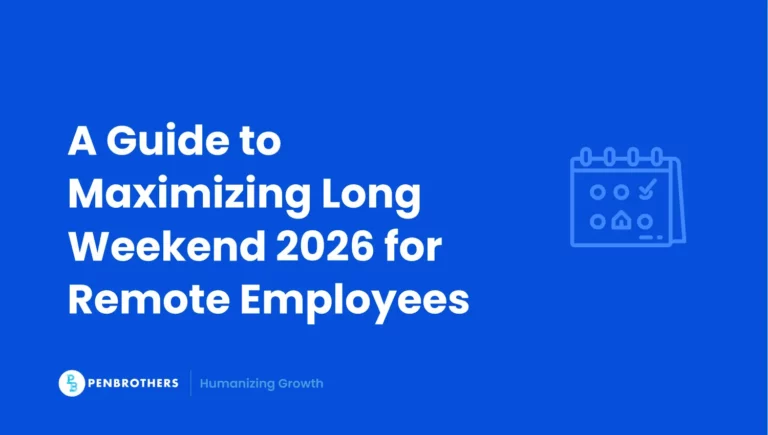A founder proudly says, “We’ve got 100 employees!”, yet deadlines still slip and workloads feel uneven. The problem? Headcount doesn’t equal capacity.
In global or hybrid teams, some employees work part-time, others split hours across projects. A headcount of 100 might deliver the output of only 70 full-timers. That gap distorts planning, budgeting, and compliance. Certain regulations even hinge on FTE, not headcount, such as the ACA’s Applicable Large Employer threshold of 50 full-time employees including FTEs.
The smarter measure is Full-Time Equivalent (FTE), a metric that converts hours worked into a standardized view of total labor capacity. FTE shows how much work your team can truly deliver, regardless of location or schedule.
This guide breaks down what FTE means, how to calculate it, and why it matters for HR, finance, and operations. By the end, you’ll see how tracking FTE reveals hidden inefficiencies and helps global teams scale with accuracy.
What Is a Full-Time Equivalent (FTE)?
A Full-Time Equivalent (FTE) measures the total hours worked by all employees and expresses it as the equivalent number of full-time workers.
In simple terms, FTE is not about how many people you have, it’s about how many full-time workloads those people collectively represent. It standardizes capacity by converting part-time and variable schedules into a single comparable unit.
Key points to remember:
- 1.0 FTE represents one full-time workload, typically 40 hours per week, though definitions can vary by company or region.
- Part-time roles count as fractional FTEs, for example, someone working 20 hours a week equals 0.5 FTE. If you’re still comparing employment setups, see our guide on part-time vs full-time work for context on how hours and benefits differ.
- When you sum all FTEs, you get a clear picture of your team’s total productive capacity.
In short:
FTE = Total hours worked ÷ Standard full-time hours
This simple formula turns headcount into insight, helping you understand true workforce capacity, not just how many people are on the roster.
Why FTE Matters More Than Headcount
Relying on headcount alone often gives a false sense of capacity. Headcount shows how many people you employ; FTE shows how much work they can actually deliver.
Headcount vs. FTE: The Core Difference
- Headcount is the total number of employees, regardless of whether they’re full-time or part-time.
- FTE measures total working hours converted into the equivalent number of full-time roles.
For example, if you have 10 employees, five full-time and five working 20 hours a week, your headcount is 10, but your total capacity equals 7.5 FTEs. This gives a far more accurate picture of productivity and workload.
How FTE Influences Key Decisions
1. Financial Planning and Budgeting
- Aligns labor costs with actual capacity instead of inflated headcount.
- Improves forecasting for payroll, benefits, and cost per employee.
- Prevents overstaffing hidden behind many low-hour positions.
2. Operations and Capacity Management
- Reveals whether your team is overworked or underutilized.
- Supports smarter hiring choices, whether to bring on one full-time employee or multiple part-timers.
- Keeps project staffing balanced by comparing labor supply against workload demand.
3. Compliance and Eligibility Thresholds
- Certain regulations, such as healthcare or benefits programs, use FTE counts to determine eligibility or employer obligations.
- Part-time hours are aggregated into FTE totals, meaning even fractional workloads can affect compliance status.
- Tracking FTE helps avoid penalties and ensures your workforce reporting remains accurate across jurisdictions.
Headcount may look impressive on paper, but it hides the reality of how work gets done. FTE provides the visibility you need to manage resources, control costs, and scale globally with precision.
How to Calculate FTE (with Examples)
Below is a clear, step-by-step method you can follow.
Step-by-step FTE calculation
| Step | Description |
| 1 | Define your “full-time” standard (e.g. 40 hours/week, or 2,080 hours/year) |
| 2 | List all employees and the number of hours they work (weekly, monthly, or annually) |
| 3 | Convert all hours to the same timespan (e.g. annual or monthly) |
| 4 | Sum total hours across all employees |
| 5 | Divide total hours by your full-time hours → gives total FTE |
| 6 | Optionally round or display fractions as is |
A simplified formula:
Total hours worked ÷ Full-time hours = FTE
You can break it into two sub-calculations:
- Sum of full-time employees = assumed 1.0 FTE each
- Sum of part-time hours ÷ full-time hours = part-time FTE
- Then add them together
Example 1: Basic mix
Suppose:
- 40 full-time employees, each 120 hours/month
- 20 part-time employees, each 60 hours/month
Part-time total = 20 × 60 = 1,200 hours
Divide by full-time standard (120 hours/month) → 1,200 ÷ 120 = 10 FTEs
Total FTE = 40 (full) + 10 = 50 FTE
Though total headcount = 60.
Example 2: Annualized
You have:
- 2 full-time (40 h/week)
- 1 part-time 30 h/week
- 1 part-time 20 h/week
- 1 part-time 10 h/week
Define full-time as 40 h/week → 2,080 h/year
Convert:
- 2 full-time → 2 × 2,080 = 4,160 h
- Part-time:
– 30 h × 52 = 1,560 h
– 20 h × 52 = 1,040 h
– 10 h × 52 = 520 h
Part-time sum = 1,560 + 1,040 + 520 = 3,120 h
Part-time FTE = 3,120 ÷ 2,080 = 1.5 FTE
Total FTE = 2 + 1.5 = 3.5 FTE
Quick table version
| Employee | Hours/week | Annual hours | FTE contribution |
| FT1 | 40 | 2,080 | 1.0 |
| FT2 | 40 | 2,080 | 1.0 |
| PT1 | 30 | 1,560 | 0.75 |
| PT2 | 20 | 1,040 | 0.50 |
| PT3 | 10 | 520 | 0.25 |
| Total | — | 7,280 | 3.5 FTE |
Note: You can adapt the baseline to monthly or weekly rather than annual, but consistency is key.
Real-world uses
- Project managers: Given a planned 500 hours of work and a team with 10 FTE, you can schedule workloads accordingly. (500 ÷ (10 × weekly hours) = weeks needed)
- Capacity gaps: If required work maps to 12 FTE but you only have 10, you know you need 2 more full-time equivalents (or equivalent part-timers)
- Benchmarking: Across departments or regions, you can compare “FTE per deliverable” rather than headcount-based metrics
FTE in Global and Offshore Contexts
Using FTE is especially beneficial but also more complex in a global or offshore setup. It helps align distributed workloads, costs, and compliance standards across multiple regions. Here’s how and why.
Why FTE helps in multinational teams
- Normalization across regions: Different countries have varying norms (35, 37.5, 40 hours/week) or statutory holidays. FTE converts all that into a common metric of capacity.
- Labor cost alignment: You can compare what “1 FTE” costs in the Philippines vs. India vs. Eastern Europe, useful in deciding resource allocation or outsourcing.
- Scalability measurement: Offshore partners often quote capacity in FTE terms (e.g., “this team can deliver up to 50 FTE”). It sets clearer SLAs.
- Workload balancing across time zones: When teams are distributed, FTE helps planners distribute tasks in a way that respects available capacity across domains.
Challenges and caveats to watch out for
- Varying full-time definitions: Full-time hours vary by country. France’s legal framework references a 35-hour week baseline in public guidance, while the Philippines’ Labor Code sets normal hours at 8 hours per day. Cross-country data also shows large differences in hours worked per worker each year.
- Local labor laws and overtime rules: Some jurisdictions limit overtime, mandate rest days, or have “maximum weekly hours” constraints. FTE must factor that in to avoid misestimating capacity.
- Non-standard working weeks / compressed schedules: Some employees may work fewer or more hours in “full workload” models (e.g., 4-day weeks, flexible schedules).
- Contractors vs. employees: Many global teams have contractors. To decide whether they count toward your total FTE, it helps to understand the distinction between an independent contractor and an employee, especially for compliance and payroll purposes.
- Holidays, national leave, public holidays: These reduce productive capacity. In global calculations, you may want to subtract expected leave/holiday hours or adjust FTE calculations to reflect “actual available hours.”
In a distributed environment, FTE becomes the anchor for aligning expectations across regions, but it requires discipline in defining baselines and consistent data capture.
How HR, Finance, and Operations Use FTE Differently
Though they share the metric, each function has its own lens and priorities for FTE:
HR
- Benefit eligibility: FTE helps decide which employees qualify for benefits, health insurance, or leave policies (e.g., minimum 0.8 FTE).
- Compliance & regulations: HR uses FTE for ACA and other legal thresholds (e.g. ALE status requires 50 FTEs)
- PTO / leave calculations: When employees work variable hours, prorating leave benefits may rely on FTE.
Finance
- Budgeting & cost forecasting: Finance uses FTE-based models to estimate labor expenses and headwinds from growth.
- Cost-per-FTE metrics: You can derive unit costs (e.g. cost per FTE, revenue per FTE).
- Scenario modeling: E.g. “If we increase capacity by 5 FTE in Asia vs. 3 FTE in Latin America, which yields better ROI?”
Operations / Project Management
- Staffing / resource allocation: Assign tasks based on how many FTEs exist (not just number of people).
- Utilization tracking: Percentage of FTE committed vs. idle.
- Workflow balancing: Ensuring that teams with higher FTEs carry proportionally larger workload (or conversely, not overloading small-FTE teams).
Example (cross-functional):
Suppose you have a global content operations team:
- HR: flags that any employee reaching 0.8 FTE now qualifies for full benefits
- Finance: needs to model that adding 2 FTE in Asia costs $X
- Operations: wants to allocate a marketing campaign requiring 60 FTE hours, it sees which region has unused capacity to take the work
FTE becomes a shared “currency” across departments.
Beyond Compliance: How FTE Shapes Smarter Workforce Strategy
FTE is not just a compliance or accounting tool, it’s a strategic lever.
Aligning labor supply with demand
By tracking FTE trends over time, you can:
- Identify over-staffed teams (high FTE relative to output)
- Spot underutilized capacity (unused FTE hours)
- Anticipate hiring needs ahead of demand spikes
- Right-size teams proactively
Preventing burnout and underutilization
FTE helps detect when staff are overloaded (FTE demand exceeds capacity) or under-challenged (FTE supply exceeds tasks), allowing load balancing, reassignments, or cross-training.
Workforce forecasting and scenario planning
You can simulate how many FTEs you need in 6–12 months given projected growth, new product lines, or geographic expansion.
Talent optimization and skills mapping
Rather than hiring headcount, you can hire skill-FTE units (e.g. you need 0.6 FTE of data analytics, 1.2 FTE of design). That helps mix full-time, part-time, or contractor roles strategically.
Automation and tooling
Modern HRIS, workforce management, or productivity dashboards (some offered by platforms like Paylocity) can automate FTE tracking, forecast gaps, and alert anomalies. FTE becomes dynamic rather than a static monthly number.
The result: smarter scaling, better ROI per FTE, and more agile adaptation to change.
Common FTE Misconceptions
Here are some myths to dispel:
1. “FTE = number of full-time employees.”
Not quite. FTE measures hours worked, not people employed. Ten part-timers working half schedules equal 5 FTEs. Without this distinction, companies may assume they have enough capacity when, in reality, their available work hours fall short.
2. “Part-timers don’t affect compliance or capacity.”
They do — significantly. Part-time hours roll up into your total FTE count. For instance, in markets with labor or benefits thresholds (such as healthcare or statutory benefits), those aggregated hours determine whether your company meets the definition of a large employer or benefit-eligible organization. Ignoring part-timers can create hidden compliance risks or inaccurate workforce reports.
3. “FTE is only for HR.”
FTE isn’t just an HR metric. Finance teams use it for labor budgeting and cost-per-FTE analysis. Operations teams use it to plan capacity and project workloads. When viewed together, FTE becomes a shared performance lens across departments, connecting workforce size, productivity, and cost.
4. “You always round FTEs to whole numbers.”
Fractional FTEs matter. A 0.25 or 0.75 FTE can represent a contractor, part-timer, or job share. Rounding them off may simplify reporting but erases valuable detail about how work is distributed. Keep decimals in your internal analysis, and round only for executive summaries.
5. “FTE reflects productivity or quality.”
FTE only measures quantity of labor time, not effectiveness. Two employees with equal FTE may deliver different outputs depending on skill, process, or tooling. Use FTE alongside performance metrics such as output per FTE, revenue per FTE, or SLA adherence to evaluate real productivity.
6. “Full-time hours are the same everywhere.”
They vary by country and industry. In France, 35 hours is full-time; in the Philippines or the U.S., it’s typically 40 to 48. If your teams are global, standardize your baseline or convert local hours to a single global reference so you can compare teams fairly.
7. “FTE is too technical for smaller companies.”
On the contrary, small and growing businesses gain the most insight from it. FTE tracking clarifies hiring needs, budget planning, and workload distribution before scaling up. It’s an early warning system for overstaffing or burnout.
Final Thoughts
Headcount tells you who you have; FTE tells you what that workforce can deliver. For global, hybrid, and offshore teams, FTE is the metric that cuts through the noise of varied working hours, part-time roles, and regional norms.
By making FTE a regular metric in your reporting:
- You gain a clearer view of capacity, avoid overstaffing or hidden shortages
- You build finance and operational alignment around a shared “capacity currency”
- You stay alert to compliance thresholds and benefits obligations
- You enable smarter planning, forecasting, and strategic growth decisions
If you manage distributed or offshore teams, understanding FTE is not optional, it’s the first step to optimizing efficiency, maintaining consistency, and scaling intelligently. To make this process easier, consider working with a trusted remote staffing agency that can help you align hiring models, compliance, and FTE tracking.






